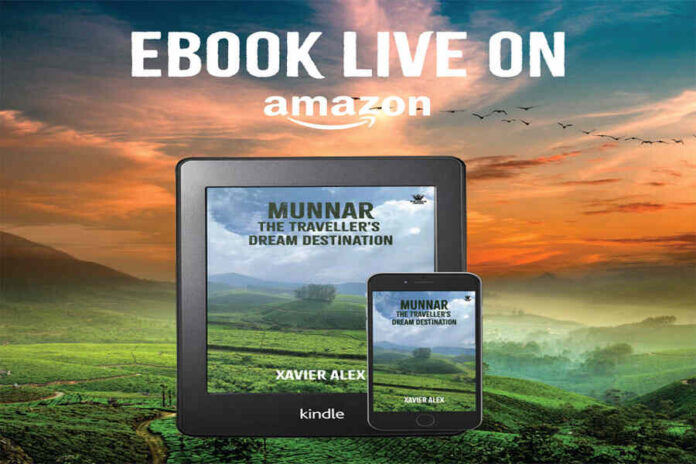- What is the main focus of the book about Munnar, and how does it delve into the history and transformation of the hill station?
The book is about Munnar, a popular hill station in the state of Kerala, as the title suggests. The story takes the reader through many roads that pass through and close to Munnar, describing its flora and animals, the surrounding culture, the population, and its history. The book explores the hardships faced by the gentlemen planters who worked to tame and develop this untamed but stunning forest region into the tea-loving tourist destination it is today.
- How did the author’s personal connection to Munnar influence the writing process, and what aspects of the place did they find particularly enchanting?
I’ve never been good at writing, but because the subject was Munnar, a place I like, I managed to finish it even though it took longer than I had anticipated. Even though I had been to most of the locations in and around the area, I always seem to find new places that are even more gorgeous than the ones I have been to up until that point. That is Munnar’s magic.
- Who were some of the individuals and organizations the author collaborated with to gather information for the book, and how did they contribute to the narrative?
I had to speak with a lot of people to get information on the location before I could write this book. My buddies in the KDHP fraternity and several of my local acquaintances were also helpful. With my assistance, I was able to find more information regarding both previous and current conservation efforts thanks to newspaper clippings, KDHP environment pamphlets, and the manifestos of environmental conservationists.
- What challenges did the author face regarding the quality of photographs for the book, and how did they address these issues?
Occasionally, I had to revisit locations I had previously visited because the old photos had been damaged, lost, or were in poor condition. The majority of the photos weren’t sharp enough because they were taken with one of my old mobile cameras. Subsequently, these photos drew criticism, so I felt compelled to ask my photographic pals for additional, better shots.
- How did the author’s passion for Munnar impact their writing experience, and what insight did they gain about the relationship between passion and productivity?
However, every day that went by, I seemed to adore the location even more. As time went on, I came to understand that writing is made easier if the author is enthusiastic about the topic. It was simpler to compose the book’s last section than its first.
- How has the tourism landscape in Munnar evolved over time, and what are some examples of emerging tourist attractions mentioned in the book?
Locations that I thought were not as good or noteworthy have recently begun to gain popularity in the travel industry. Previously buffer areas to Munnar’s tourism, such as Poopara, Anachal, and Vatavada, have now developed into tourist destinations in and of themselves. The travel and tourism sector is experiencing rapid growth, and ambitious individuals are creating new tourist destinations in formerly uninhabitable and unnavigable locations. By constructing lodging facilities where no one ever imagined a house could be built and constructing roads over extremely challenging terrain, they have been made habitable for travelers.
- “How has tourism in Munnar evolved to embrace innovative experiences such as off-roading through tea farms and camping in remote mountaintop locations with minimal amenities?”
Additionally, innovative forms of tourism have been discovered in Munnar. The norm now is to off-road across dirt roads in tea farms and go up less-traveled mountain trails. Young people’s favorite activity these days is camping in remote mountaintop locations with bare minimum amenities. Laid-back tourism has been surpassed by activity tourism.
- “What inspired the creation of your book, and what message, if any, do you hope readers take away from it?”
Since the story of this book is just about highlighting nature rather than discussing social science, morals, ethics, or other such subjects, I did not intend to convey any message to the readers. But I’m happy with this book if it helps the readers grasp the beauty of nature around them, even if it’s just a small amount of attention, liking, or curiosity. Promoting people’s interest in and understanding of nature is essential for raising their level of awareness of and respect for their natural surroundings, improving their mental health, and advancing efforts to conserve biodiversity.


